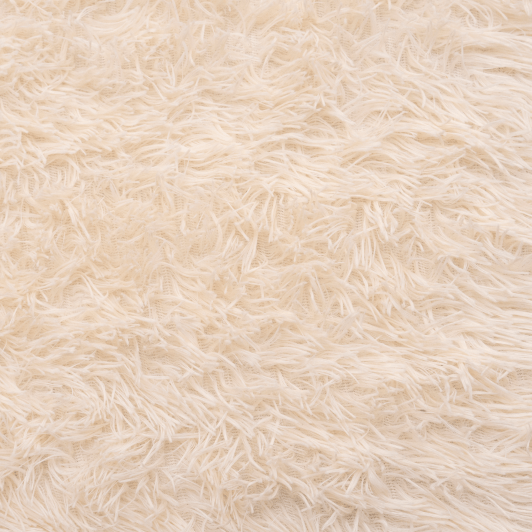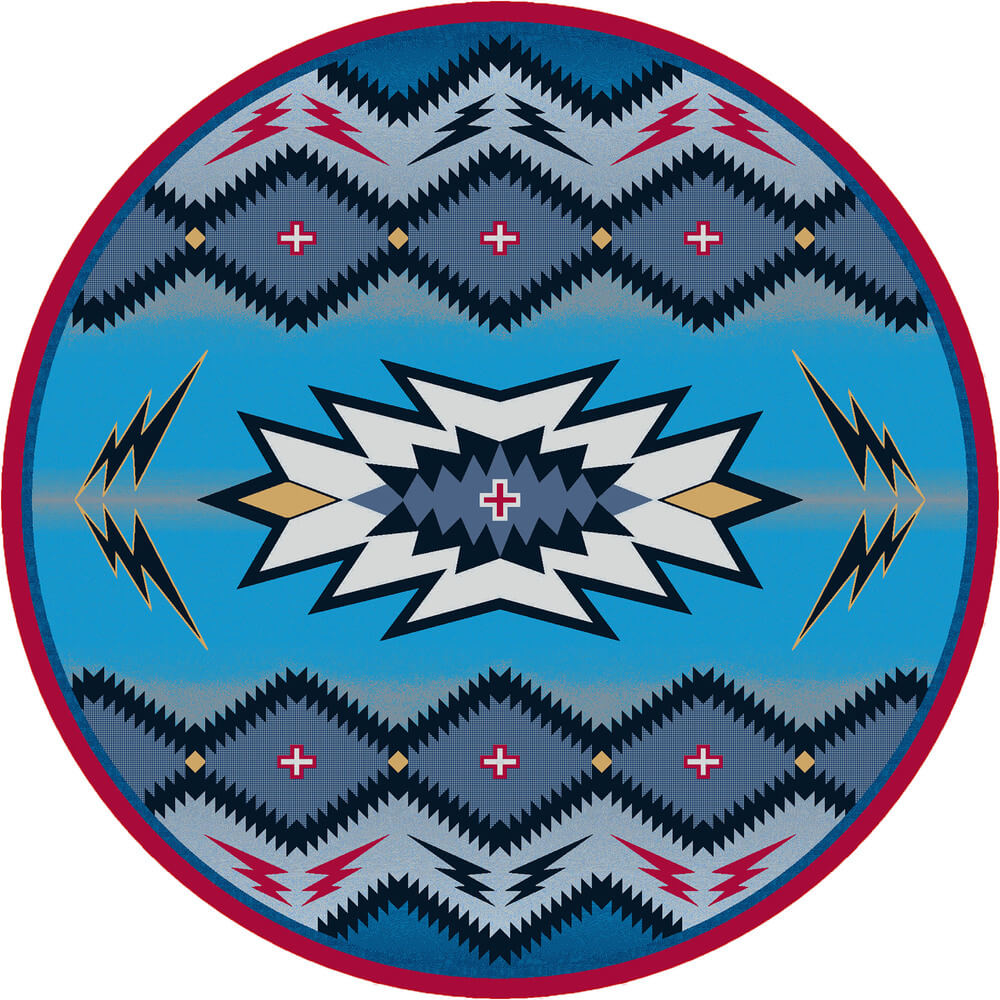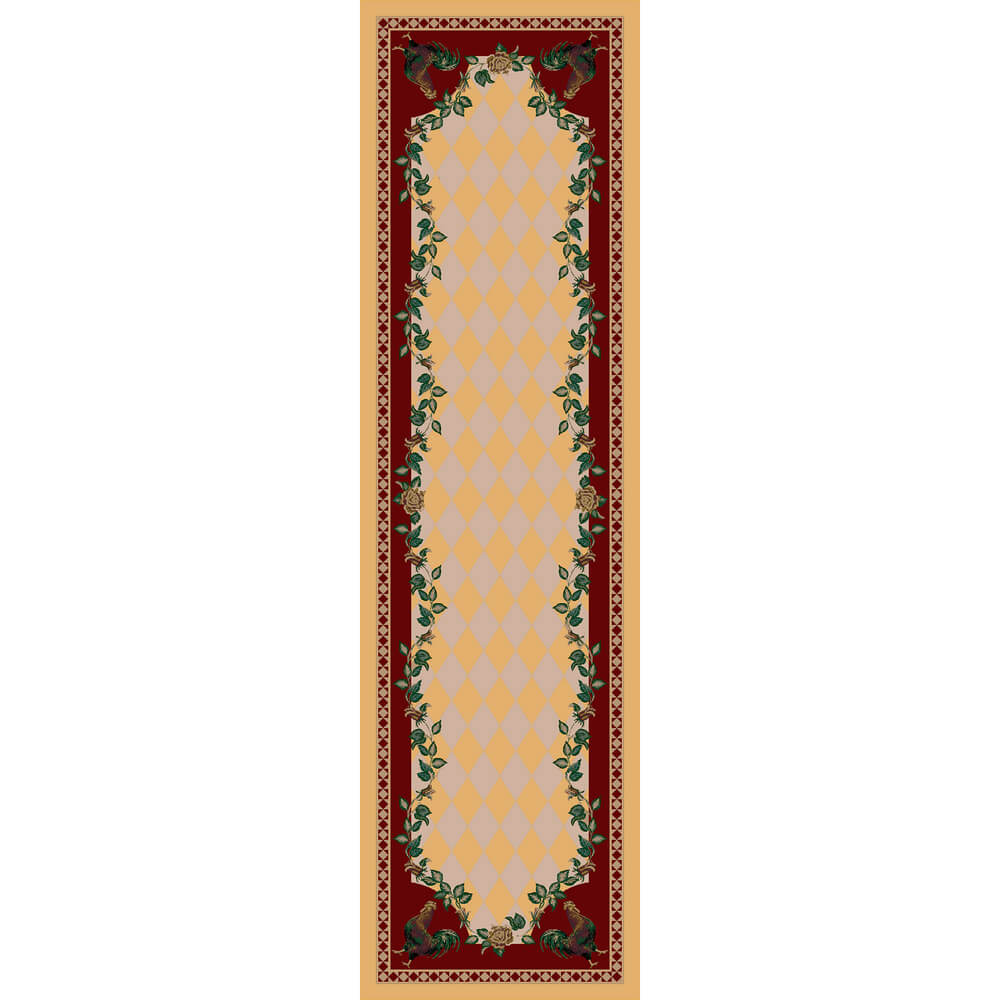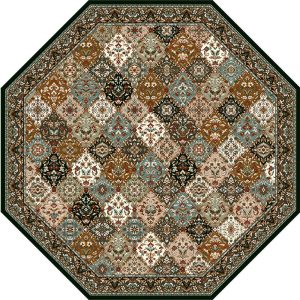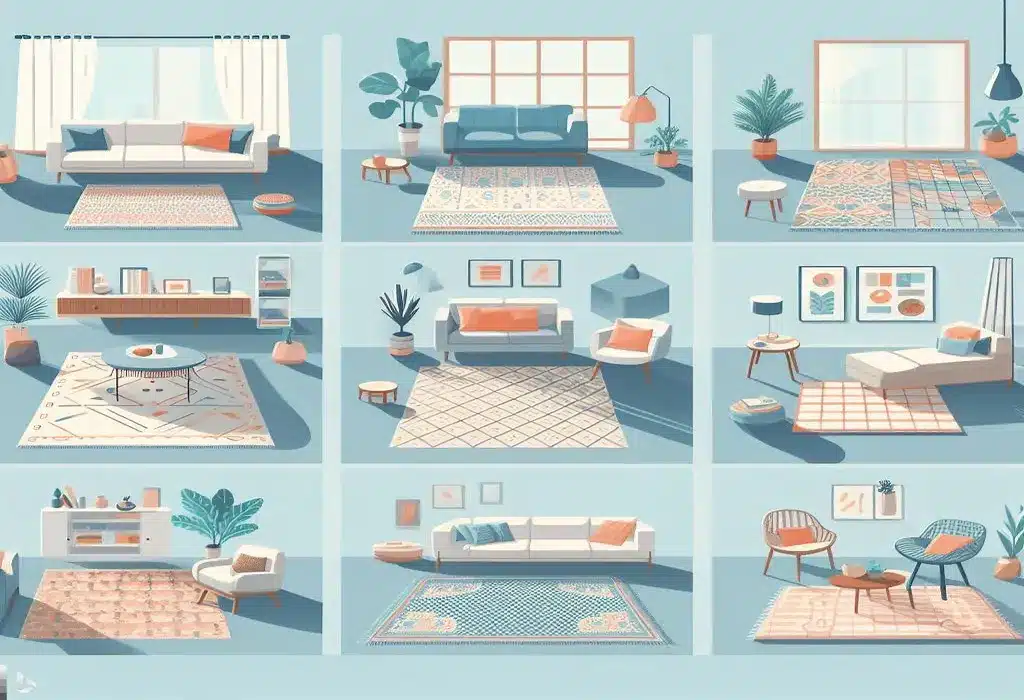Are you looking for a new rug to add some style and comfort to your home? If so, you might be wondering what are the standard rug sizes and how to choose the right one for your space. Rugs come in various shapes, sizes, colors, and patterns, and finding the perfect one can be a challenge. You want a rug that fits your room, complements your furniture, and suits your personal taste.
In this article, we will help you find the best rug for your space by explaining what are the standard rug sizes, how to measure your room, and how to place your rug according to different types of rooms. We will also provide some tips and tricks to make your rug shopping easier and more fun. By the end of this article, you will have a better idea of how to choose the right rug size for your space.
What are the standard rug sizes?
Rugs are usually measured in feet and inches, and they come in standard sizes that range from small to large. Here are some of the most common standard rug sizes and their dimensions:
- 2′ x 3′: This is a small rug that can be used as a doormat, a kitchen mat, or a bathroom mat. It can also be placed in front of a fireplace, a sink, or a vanity.
- 3′ x 5′: This is a medium-sized rug that can be used as an accent rug in a small room, such as a bedroom, a nursery, or an office. It can also be placed under a coffee table, a desk, or a small dining table.
- 4′ x 6′: This is another medium-sized rug that can be used as an accent rug in a larger room, such as a living room, a dining room, or a family room. It can also be placed under a sofa, a loveseat, or a large dining table.
- 5′ x 8′: This is a large rug that can be used as an area rug in a spacious room, such as a master bedroom, a guest room, or a game room. It can also be placed under a queen-size bed, a sectional sofa, or an entertainment center.
- 6′ x 9′: This is another large rug that can be used as an area rug in an even larger room, such as a great room, a sunroom, or a studio apartment. It can also be placed under a king-size bed, an L-shaped sofa, or a dining table for six.
- 8′ x 10′: This is an extra-large rug that can be used as an area rug in an expansive room, such as an open floor plan, a loft, or a basement. It can also be placed under multiple pieces of furniture, such as two sofas, two chairs, and two coffee tables.
- 9′ x 12′: This is another extra-large rug that can be used as an area rug in an enormous room, such as a ballroom, a gallery, or a mansion. It can also be placed under multiple pieces of furniture, such as three sofas, three chairs, and three coffee tables.
These are some of the standard rug sizes that you can find in most stores and online shops. However, keep in mind that these sizes are not fixed and may vary slightly depending on the manufacturer and the type of rug. For example, some rugs may have fringes or borders that add extra inches to their dimensions. Therefore, it is always advisable to check the exact measurements of the rug before buying it.
How to measure your room for the right rug size?
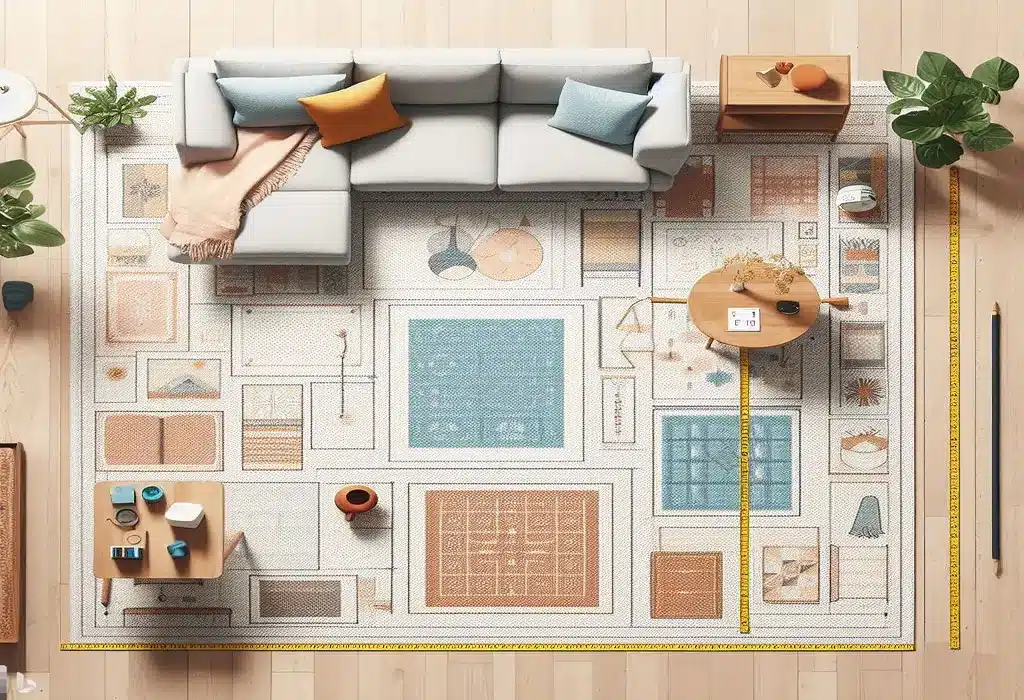
Before you start shopping for rugs, you need to measure your room and determine how much space you have for the rug. This will help you narrow down your options and avoid buying a rug that is too big or too small for your space.
To measure your room for the right rug size, you will need:
- A measuring tape
- A pen and paper
- A calculator (optional)
Here are the steps to follow:
Measure the length and width of your room in feet and inches. Write down these numbers on your paper.
Decide how much floor space you want to cover with the rug. This will depend on your personal preference and the type of room you have. For example:
- If you want to create a cozy and intimate feel in your room, you may want to cover most of the floor with the rug.
- If you want to create a spacious and airy feel in your room, you may want to leave some floor space around the edges of the rug.
- If you want to create a balanced and harmonious feel in your room, you may want to follow the rule of thirds: cover one-third of the floor with the rug and leave two-thirds of the floor exposed.
Subtract the amount of floor space you want to leave around the edges of the rug from the length and width of your room. This will give you the maximum length and width of the rug that you can fit in your space. For example, if your room is 12′ x 15′ and you want to leave 2′ of floor space around the edges of the rug, you can subtract 2′ from both sides and get 10′ x 13′ as the maximum rug size for your space.
Compare the maximum rug size that you calculated with the standard rug sizes that are available in the market. Choose the closest standard rug size that is smaller than or equal to your maximum rug size. For example, if your maximum rug size is 10′ x 13′, you can choose a standard rug size of 9′ x 12′ or 8′ x 10′.
If you cannot find a standard rug size that matches your maximum rug size, you can also consider customizing your rug or buying multiple rugs and layering them together.
How to place your rug according to different types of rooms?
Once you have chosen the right rug size for your space, you need to place it correctly according to the type of room you have and the furniture arrangement you have. This will help you create a cohesive and attractive look in your space.
Here are some general tips and guidelines on how to place your rug according to different types of rooms:
Living Room

The living room is where you entertain guests, relax with family, and enjoy various activities. Therefore, you want a rug that creates a comfortable and inviting atmosphere in your living room. Here are some ways to place your rug in your living room:
- If you have a large living room with multiple seating areas, you can use one large rug or multiple rugs to define each seating area. For example, you can place one large rug under your main sofa and coffee table, and another smaller rug under your accent chairs and side table.
- If you have a small living room with one seating area, you can use one medium-sized or large rug to anchor your seating area. For example, you can place one medium-sized or large rug under your sofa and coffee table, and make sure that all or most of the legs of your furniture are on the rug.
- If you have a sectional sofa in your living room, you can use one large rug to accommodate your sectional sofa and coffee table. For example, you can place one large rug under your sectional sofa and coffee table, and make sure that all or most of the legs of your furniture are on the rug.
Dining Room

The dining room is where you enjoy meals with family and friends, celebrate special occasions, and host parties. Therefore, you want a rug that creates a stylish and elegant atmosphere in your dining room. Here are some ways to place your rug in your dining room:
- If you have a rectangular dining table in your dining room, you can use a rectangular or oval rug that is large enough to fit your dining table and chairs. For example, you can place a rectangular or oval rug under your dining table and chairs, and make sure that there is at least 24 inches of extra space on all sides of the table for the chairs to move in and out easily.
- If you have a round dining table in your dining room, you can use a round or square rug that is large enough to fit your dining table and chairs. For example, you can place a round or square rug under your dining table and chairs, and make sure that there is at least 24 inches of extra space on all sides of the table for the chairs to move in and out easily.
- If you have a small dining area in your kitchen or living room, you can use a small or medium-sized rug that is proportional to your dining table and chairs. For example, you can place a small or medium-sized rug under your dining table and chairs, and make sure that there is at least 18 inches of extra space on all sides of the table for the chairs to move in and out easily.
Bedroom
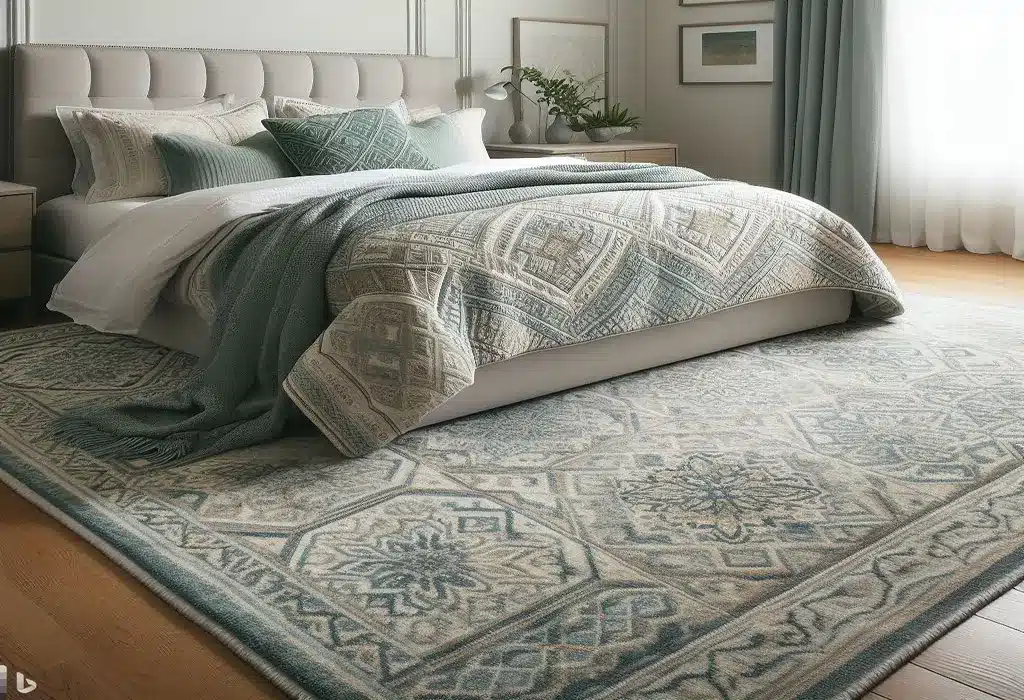
The bedroom is where you sleep, relax, and unwind. Therefore, you want a rug that creates a cozy and soothing atmosphere in your bedroom. Here are some ways to
If you have a twin bed or a bunk bed in your bedroom, you can use one small or medium-sized rug to add some warmth and color to your floor. For example, you can place one small or medium-sized rug next to your bed, under your desk, or in front of your closet.
These are some general tips and guidelines on how to place your rug according to different types of rooms. However, you can also experiment with different rug sizes, shapes, and placements to create your own unique and personal style. The most important thing is to have fun and enjoy your rug shopping experience.
How to choose the right rug for your space?
Now that you know how to measure your room and place your rug according to different types of rooms, you might be wondering how to choose the right rug for your space. There are many factors to consider when choosing a rug, such as the color, the pattern, the texture, the material, and the quality. Here are some tips and tricks to help you choose the right rug for your space:
Color
The color of your rug can have a big impact on the mood and atmosphere of your space. You can use the color of your rug to create contrast, harmony, or accent in your space. For example:
- If you want to create contrast in your space, you can choose a rug that has a different color from your walls, furniture, or curtains. This will make your rug stand out and add some drama and interest to your space.
- If you want to create harmony in your space, you can choose a rug that has a similar color to your walls, furniture, or curtains. This will make your rug blend in and create a cohesive and calm look in your space.
- If you want to create an accent in your space, you can choose a rug that has a bright or bold color that pops out from the rest of your decor. This will make your rug the focal point and add some personality and flair to your space.
Pattern
The pattern of your rug can also affect the look and feel of your space. You can use the pattern of your rug to add some variety, movement, or balance to your space. For example:
- If you want to add some variety to your space, you can choose a rug that has a different pattern from your other decor elements. This will make your rug more eye-catching and add some diversity and spice to your space.
- If you want to add some movement to your space, you can choose a rug that has a dynamic or geometric pattern that creates a sense of motion or direction. This will make your rug more lively and energetic and add some rhythm and flow to your space.
- If you want to add some balance to your space, you can choose a rug that has a symmetrical or organic pattern that creates a sense of harmony or order. This will make your rug more soothing and relaxing and add some stability and structure to your space.
Texture
The texture of your rug can also influence the comfort and ambiance of your space. You can use the texture of your rug to add some softness, warmth, or coziness to your space. For example:
- If you want to add some softness to your space, you can choose a rug that has a smooth or silky texture that feels nice underfoot. This will make your rug more comfortable and inviting and add some elegance and luxury to your space.
- If you want to add some warmth to your space, you can choose a rug that has a thick or fluffy texture that traps heat and insulates your floor. This will make your rug more cozy and snug and add some comfort and charm to your space.
- If you want to add some coziness to your space, you can choose a rug that has a fuzzy or shaggy texture that creates a soft and plush feel. This will make your rug more cuddly and inviting and add some warmth and character to your space.
Material
The material of your rug can also affect the durability and maintenance of your rug. You can use the material of your rug to suit your lifestyle, budget, and preference. For example:
- If you want a durable and easy-to-clean rug, you can choose a rug that is made of synthetic fibers, such as nylon, polyester, or polypropylene. These fibers are resistant to stains, fading, and wear and tear, and they can be cleaned with a vacuum or a damp cloth.
- If you want a natural and eco-friendly rug, you can choose a rug that is made of natural fibers, such as wool, cotton, or jute. These fibers are biodegradable, renewable, and hypoallergenic, and they can add some texture and warmth to your space. However, they may require more care and attention, such as regular vacuuming, spot cleaning, or professional cleaning.
- If you want a luxurious and unique rug, you can choose a rug that is made of animal hides or skins, such as cowhide, sheepskin, or leather. These materials are soft, smooth, and durable, and they can add some elegance and personality to your space. However, they may be more expensive and sensitive to moisture and sunlight.
Quality
The quality of your rug can also determine the longevity and appearance of your rug. You can use the quality of your rug to get the best value for your money. For example:
- If you want a high-quality rug that lasts for a long time, you can choose a rug that is hand-knotted or hand-tufted. These rugs are made by skilled artisans who tie each knot or tuft by hand, creating intricate patterns and designs. These rugs are dense, sturdy, and beautiful, but they may also be more costly and heavy.
- If you want a low-quality rug that is affordable and lightweight, you can choose a rug that is machine-made or machine-loomed. These rugs are made by machines that weave or loop the fibers together, creating simple patterns and designs. These rugs are thin, flimsy, and plain, but they may also be cheaper and easier to move.
These are some tips and tricks on how to choose the right rug for your space. However, you can also trust your own instinct and taste when choosing a rug. The most important thing is to find a rug that makes you happy and comfortable in your space.









